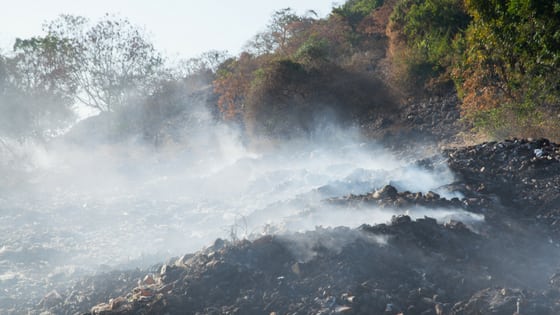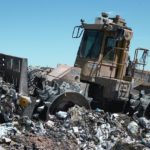Landfill Australia  – What You Need To Know About Australian Waste
– What You Need To Know About Australian Waste
Energy Disrupter
Landfill Australia 
Basically, a landfill is a place wherein waste is disposed of by the process of burying it and covering it over with soil. Its main purpose is to seclude it from the environment, therefore avoiding contamination.
[embedded content]
In Australia, around 600 officially registered landfills sites exist. Along with that, it is also noted that there are as many as 2,000 unregistered ones.
Now that we know roughly how many are there, let us ponder again this question “Is it really helpful for the environment?”
>>Download Now: Free PDF Business Owners Guide To General Waste Bin Services
Landfill Australia: Effects To The Environment
Landfills have had a poor reputation for quite some time now. The vast majority consider landfilling as the worst possible option. Interestingly, in the past, people saw them as a good thing. After all, they have found a way to handle rubbish by controlling them in one area.
First, landfills can produce different kinds of toxic gases that can be very harmful to the environment. They produce methane, which is a potent greenhouse gas.
According to an article on pollution from landfills, methane is 50 times more potent than carbon dioxide. It is produced when organic materials break down. 25 per cent of methane released is related to landfill – which is a human activity.
Besides methane, landfills also produce carbon dioxide, ammonia, and sulphides, all of which can be dangerous to the environment.
Another bad effect that landfills have is their threats to groundwater and surface waters, therefore causing water pollution if not properly maintained and built. Some waste includes home-cleaning materials like industrial solvents and household cleaners.
When accumulated, it turns into leachate which is the combination of water and toxic chemicals that combine together in landfills. It can be a major threat to the quality of groundwater.
Lastly, landfills are suspected of causing major health issues among the people surrounding them, especially in children and the elderly.
Landfill Australia: global problems on the horizon
In not-so recent news, China’s largest dump, Jiangcungou in Shaanxi Province, is already full.
The good news? None. The bad news? It should not have been full for another 25 years!
It was initially designed to take in 2,500 tonnes of rubbish in a day, but sadly, it received a staggering 10,000 tonnes of waste a day, which quadrupled in amount! This is largely due to the fact that China collected 215 million tonnes of urban household waste in 2017, significantly rising from 152 million tonnes ten years ago. That is so much waste when you think about it and, of course, is related to the rapid economic growth of China.

A new incineration plant was opened earlier this month to lessen the waste disposed of in the landfill. Four more were opened just last year. Together, the five incineration plants are expected to burn 12,750 tonnes of waste per day.
Unfortunately, the incineration that was thought of also poses a grave threat to the health of both humans and the environment.
Depending upon the composition of waste, incinerators can release many types of pollutants which leads to the deterioration of health and degradation of the environment.
The gas emitted from incineration may include acid gases, nitrogen, sulphur and metals – aside from the unknown chemicals present in the waste burned. Certain advanced countries including Sweden and Japan have invested in the latest incineration facilities. With that said, they argue they are safe and healthy.
[embedded content]
Here at Waster, you can always expect to read informative news regarding waste management and recycling.
To know how much recyclable materials end up in landfills, check out our past blog here on how much perfectly good recyclable materials end up in general waste. Spoiler alert: it may be worse than you expect!
Is there another way to avoid landfills?
According to an article on the ABC regarding the impact of landfills, landfills do more harm than good. I reckon that we can say the same about landfill in Australia. However, this might be more so due to mismanagement rather than any other reason. This is, of course, debatable, as viable options to prevent dumping at landfill will require huge changes in production, consumption and recycling globally.
Countries such as Germany, Switzerland, the Netherlands, Austria, Belgium, Denmark, and Norway are reducing their reliance on landfills.
In fact, they have maximised their recycling method – separating food and other organic materials from non-organic materials.
They practice methods such as anaerobic digestion for energy production, which reduces the emission of greenhouse gases into the atmosphere. It prevents the methane from being released into the air and transforms it either as biogas or biofertiliser.
The result?
As a result, unwanted waste generated from their respective countries that go to landfills drops to a measly 3 per cent or even less, as opposed to Australia that disposes 40 per cent of its generated waste into landfills.
But all is not lost! Australia has an opportunity to redeem itself and target the end of landfills in the coming decade.
There will be an update on our National Waste Policy that aims to recycle or recover generated waste by a minimum of 80 per cent.
Practices such as the implementation of strong leadership from the government and business, substantial funding, and comprehensive national education programs will surely be vital in the upcoming years to ensure the successful execution of the waste policy.
Landfill in Australia can be successfully reduced if ample efforts are made by both the government and the people.
To know more about ways on how to encourage people to recycle, read our blog here on recycling initiatives in Adelaide, South Australia.
Landfill Australia: recycling is one part of the answer!
Imagine if every kind of garbage had value. Sounds good, right?
It would essentially be a win-win situation, people would be encouraged to collect and manage their own waste and in turn, they get paid by the government because of it.
In an article, it is said that researchers at the University of New South Wales (UNSW) are currently developing a type of technology that uses plastics and metal alloys from electronic waste to produce 3D printer feedstock.
Basically, in order to lessen the use of landfill in Australia, a circular economy has to be taken into consideration.
Circular economy, as defined by the Ellen MacArthur Foundation, “is based on the principles of designing out waste and pollution, keeping products and materials in use, and regenerating natural systems.”
In short, it is a must to reduce, reuse, and recycle the utilised materials encompassed in a circular economy.
Taking these ideas into heart, we will have a bright future ahead!
Waster: here to help you with recycling!
At Waster, we would want to avoid as much as possible the disposal of waste in landfills.
[embedded content]
So, as a way to help the people of Australia in implementing effective waste management, we offer our waste and recycling services to you!
Call 1300 WASTER (1300 927 837) if you have any questions. Or, you could also enquire at [email protected] now!







 – All Private…
– All Private…





 – QLD Government Guide
– QLD Government Guide





